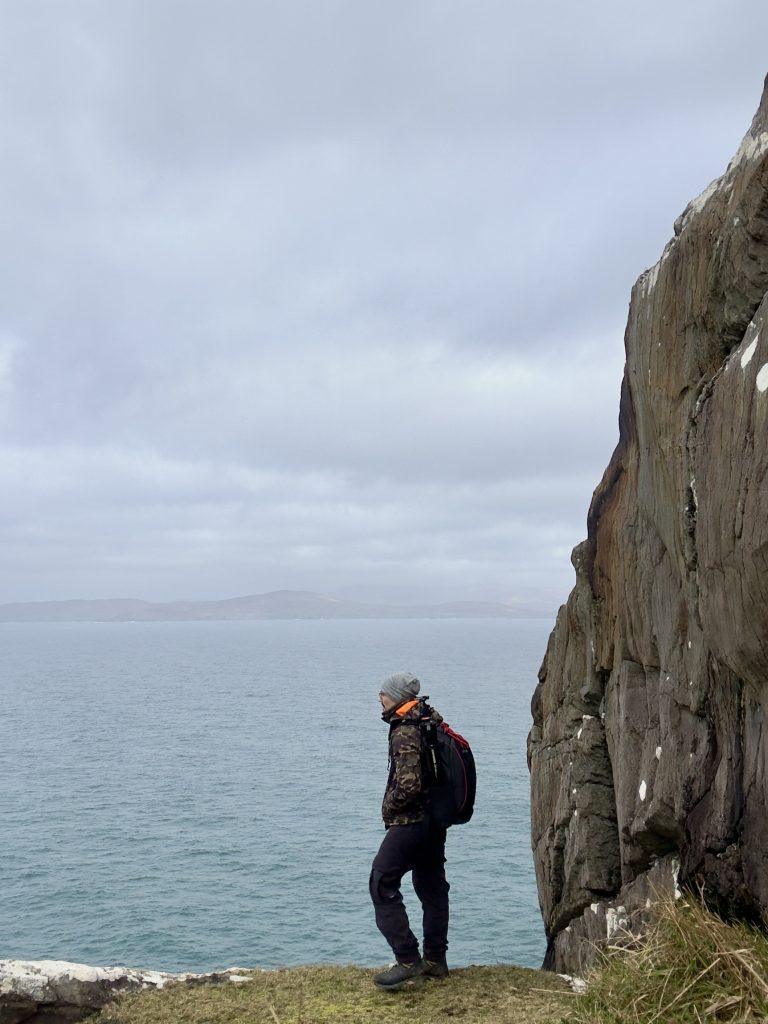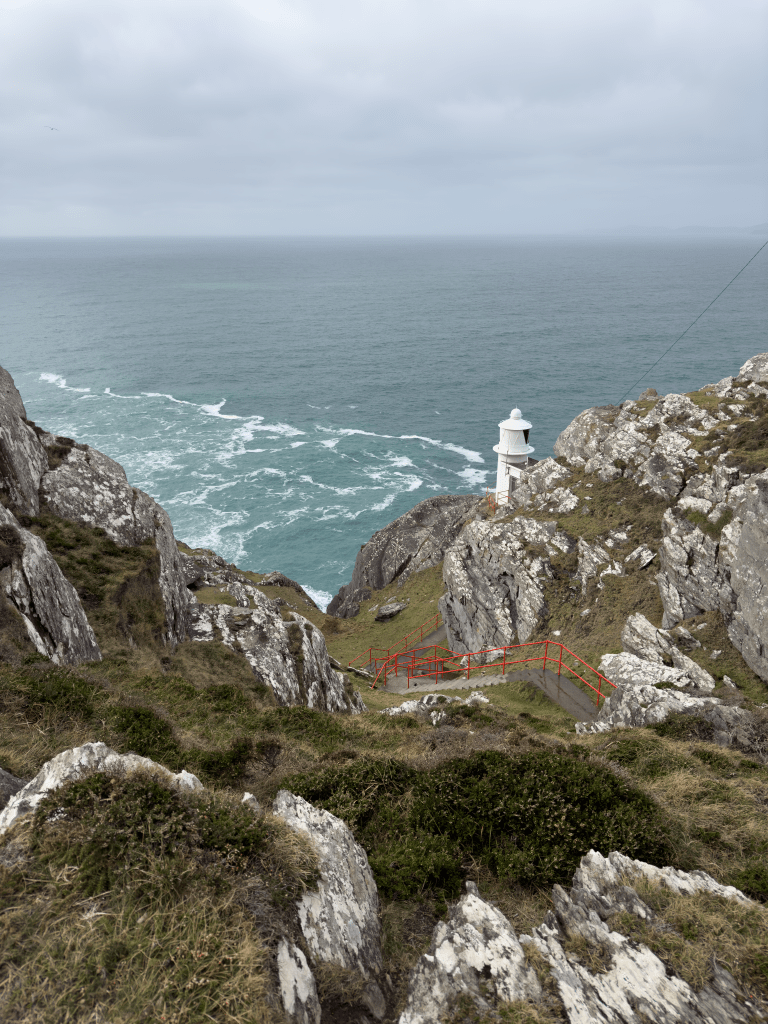Sheep’s Head, a thin peninsula that stretches out into the Atlantic, is the exact point where this project began.
A remote and wild place, where the land plunges sheer into the sea and the wind tells stories that seem to belong to another time.
I remember the precise moment I reached the top of the cliff. I was alone, the rough sea stretched out before me like an infinite breath and the cutting wind forced me to remain firm, physically and mentally. It was March, and the typical climate of the west of Ireland changed rapidly: a moment of sunshine gave way to low clouds laden with water, then light again.

At the top of Sheep’s Head, first inspection. The wind was so strong that it was difficult to even maintain the position of the tripod.
It wasn’t just about choosing the perfect location for a photograph: it was essential to listen to the landscape.
I wanted my first image to be a kind of held breath, a precarious balance between the force of nature and human vulnerability. That’s how the opening shot of Éire i Dubh Agus Bán was born.
I let myself be guided by sounds: the rhythmic crash of the waves, the rustle of the grass bent by the wind, the irregular beat of the rain on the clothes. And as I searched for the right frame, each noise became part of a larger, almost musical composition.
Sheep’s Head was the first place where I really understood that color would take away something from the essence of this project.
I chose black and white to remove the superfluous and give the public only the essential forms: the light, the shadow, the texture of the rocks, the movement of the waves.
In this place, the contrast between the bright peaks of the crests of water and the deep shadows of the cliffs already created a visual, almost abstract, narrative.

Study of natural contrasts and patterns on the Sheep’s Head coast.
At that moment I understood that this journey would not only be geographical, but intimate. Sheep’s Head represented the extreme edge of the earth, but also a starting point for an exploration within myself.
This first stop defined the aesthetic and philosophical direction of Éire i Dubh Agus Bán: a silent dialogue between man and nature, where the observer is invited to cross an invisible threshold.